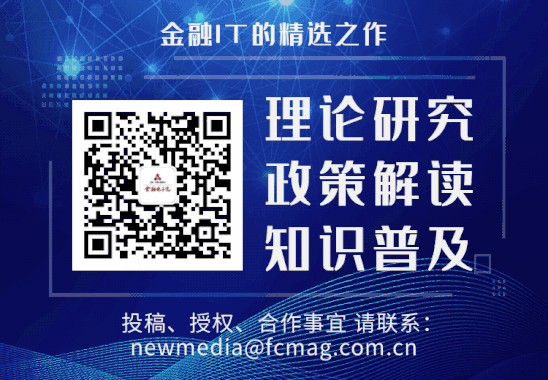Edge computing can provide computing power nearby, reshaping banking service forms and customer experiences, making it an important tool for the digital transformation of banks. In 2022, the People’s Bank of China proposed the “Financial Technology Development Plan (2022-2025)”, which clearly stated that the financial industry should develop and deploy intelligent edge computing nodes around high-frequency business, creating technologically advanced and appropriately scaled edge computing capabilities. As domestic financial enterprises actively layout edge computing capabilities to support financial service innovation, the Industrial and Commercial Bank of China seizes the opportunity of the new technology development wave, focuses on its own development needs, and explores a feasible path for empowering the digital transformation of banks based on a new edge computing model.

Industrial and Commercial Bank of China Software Development Center Lu Jinbiao
Exploring the Potential of Edge Computing to Promote the Digital Transformation of the Financial Industry
Faced with challenges such as the demand for faster response times in financial services and increasingly stringent regulatory oversight, edge computing is becoming a key capability for supporting high-quality development of financial business in the new era, meeting the real-time business and privacy protection needs of the financial industry’s digital transformation.
1. Edge computing is a proactive choice for the digitalization of branch operation management.Through real-time analysis of people, objects, and events using edge intelligence, it perceives the real-time dynamics of branch operations, coordinates and schedules personnel, smart terminals, and other service resources to actively provide services, achieving a supply of digital service capabilities and refined management, gradually transforming the branch operation model into a customer-centric, data-driven service, enhancing the comprehensive competitiveness and operational vitality of the branches.
2. Edge computing is a necessary means for the digitalization of transaction risk management.By integrating edge computing and video intelligent analysis technologies, it builds capabilities such as “perception, understanding, execution, linkage, and iteration” to effectively supervise safety compliance norms at key stages of banking transactions or important operational areas of the bank across all time domains, chains, and dimensions, providing risk warnings and intervention for business transactions with potential risks, and enhancing the risk control capability of business operations.
3. Edge computing is a core guarantee for the digitalization of customer services in banks.Edge computing can fully exploit the value of the vast amounts of unstructured data, such as audio and video accumulated by banks, releasing broad data space and potential, enriching various personalized customer tags, deeply characterizing customer profiles from multiple perspectives, and accurately innovating new financial product services suitable for users based on customer transaction preferences, providing customers with a warm service experience and enhancing the bank’s customer service capabilities.
The Industrial and Commercial Bank of China deepens its understanding of digital transformation, taking the construction of an edge computing system as an opportunity to integrate digital technologies such as artificial intelligence and big data from the cloud to the edge close to customers, providing real-time response and secure, reliable edge intelligent solutions, helping to expand the boundaries of banking financial services and innovate financial service models.
Adapting to Financial Technology Trends: Building an Edge Computing System
In recent years, the Industrial and Commercial Bank of China has taken the lead in the industry to initiate the construction of an edge computing system and related financial innovation scenario planning, initially establishing a flexible, real-time, and unified edge-cloud collaboration system, achieving resource and data collaboration between the cloud, edge, and terminals, possessing core capabilities such as edge node access management, full lifecycle management of edge applications, bidirectional communication of edge-cloud data, edge function computing, edge rule engine, and edge intelligent computing, promoting the rapid landing of new financial service scenarios in banks.
1. Building a new edge computing infrastructure with “cloud training and edge inference”.Transferring the AI model inference capabilities from the cloud to offline edge scenarios, providing stable and reliable edge computing support for the vast data generated during the intelligent transformation of banking business. By creating a unified platform development AI workstation across edge-cloud terminals, based on data intelligent labeling technology, automated modeling technology, and model compression conversion technology, combined with the characteristics of different financial business verticals, it continuously optimizes and builds a production line for specialized domain models, reducing the technical threshold for developing edge intelligent applications, helping the bank to build large-scale edge intelligent models to meet the rapid replication and promotion needs of edge intelligent application scenarios.
2. Creating integrated edge resource scheduling and management service capabilities.Providing a standardized cloud-native operating environment based on the edge computing framework, supporting the management of various mainstream edge integrated machines and embedded intelligent devices through a containerized deployment model that shields the underlying hardware environment differences, providing an elastic, scalable, and highly expandable edge resource pool, meeting the plug-and-play flexible service deployment model. Edge application development only needs to focus on business needs, without worrying about device operation and maintenance, enabling one-click deployment of edge applications to designated business edge terminals. As subsequent business scenarios continue to expand and enrich, dynamic scaling of edge computing can be performed according to actual business needs, achieving rapid iteration of edge applications and supporting the rapid customization and launch of innovative business scenarios in branches.
3. Deeply mining the value of unstructured data in banks.Edge computing promotes the integrated application of bank data, following the principle of storing low-value density source data nearby and fully mining high-value data into the cloud, conducting pre-processing and intelligent analysis of the massive unstructured data generated by branches nearby, building intelligent monitoring and early warning capabilities for video in branches, assisting daily operational governance and decision-making. At the same time, for the user behavior information identified with high business value, further integrating it with cloud user transaction and other business data to enrich customer marketing profiles, accelerating the integration of multi-source data for branch customer marketing and indicator evaluation, helping to explore innovative business applications, achieving a closed loop from data to financial value realization.
Deepening Edge Intelligent Applications: Creating Financial Innovation Service Models
1. Building a new model for intelligent service management of branch operations.The Industrial and Commercial Bank of China empowers the digital transformation of branches with edge computing, creating an offline smart decision-making center to enhance the comprehensive competitiveness of branches. By deploying cameras and edge computing devices in branches, it conducts local intelligent analysis of video monitoring data, strengthening the operational management of branches and enhancing operational efficiency. Firstly, it achieves customer traffic statistics, trajectory analysis, dwell time analysis, and density heat analysis for customers arriving at the branch, helping the bank gain insights into branch customer flow, area personnel entry and exit, and density congestion, assisting in optimizing business processes, reasonably adjusting business area distribution, self-service device placement, and personnel allocation. Secondly, it implements intelligent supervision and inspection of staff service behaviors, replacing manual inspections of the operating environment and service processes, timely checking and supervising non-compliant service behaviors such as customer operations and long vacancies to enhance customer experience and satisfaction. Thirdly, as a smart device scheduling center for branches, it realizes the interconnection and coordination of intelligent service robots, smart screens, and intelligent self-service devices within the branches, based on the waiting situation of on-site customers, assisting lobby managers in providing customer business handling guidance, actively welcoming guests, guiding diversion, product promotion, and business promotion services, forming a collaborative service model centered around “people + intelligent service robots + self-service devices”, helping to create a more technologically advanced, futuristic, and warm financial service experience.
2. Shaping new compliance control capabilities for financial business operations.The Industrial and Commercial Bank of China uses edge computing to provide intelligent dual recording quality inspection services, assisting branch business operations in regulatory compliance, applying AI inference capabilities to marketing scenarios such as wealth management insurance in branches, meeting the regulatory requirements of the Banking and Insurance Regulatory Commission for the sales process of banking funds and insurance products. Based on a unified standard script template and standard operating procedures, it comprehensively applies intelligent technologies such as speech recognition, semantic analysis, OCR recognition, target detection, and action sequence recognition to build an intelligent dual recording quality inspection model, conducting on-site recording and video recording during personal marketing and counter product sales, real-time intelligent detection of whether business personnel have misleading statements or omissions of risk warnings during the marketing process, synchronously outputting inspection quality analysis reports to determine whether this marketing process is compliant. Effectively addressing the pain points of complex dual recording compliance inspection processes, significant script differences, time-consuming and labor-intensive manual quality inspections, and lack of standardization, transforming post-quality inspection into in-process quality inspection, improving the timeliness of dual recording quality inspection prevention and control, and reducing the time spent on daily quality inspection work. It is estimated that after applying intelligent dual recording quality inspection, the average time for dual recording inspections in branches has been reduced by 70%, effectively assisting in regulatory compliance for marketing dual recording and protecting customers’ legal rights.
3. Creating a new system for collaborative customer service online and offline.The Industrial and Commercial Bank of China strengthens offline touchpoint connection services based on edge computing, expanding multi-channel business touchpoints, breaking down barriers between online and offline channels, creating a collaborative capability of offline awakening online and online dispatching offline, innovating product and service models. On the one hand, for complex business processing scenarios offline, it provides online support from a remote business expert team. Through digital media innovation applications such as VR/AR glasses and holographic cabins supported by edge computing, replacing traditional voice or text interaction forms, the online support team can conduct “face-to-face” three-party video calls with customer managers and customers, providing “hands-on” guidance for business handling, meeting various banking transaction, advisory investment, and value-added service needs of customers in a real-time, comprehensive, rapid, and professional manner. On the other hand, for business needs received online that require offline collaboration, it collects and analyzes the service and busy degree of branch business through edge-cloud collaboration and big data technologies, awakening real-time collaborative processing offline. Achieving a two-way interweaving of information between online and offline channels further improves the intelligent level of customer service, providing stronger support for expanding the depth and breadth of services.
In the future, the Industrial and Commercial Bank of China will rely on the national information technology development strategy, adhere to the core position of innovation, and insist on technological self-reliance and self-improvement, empowering the financial digital intelligent transformation development with edge computing, continuously improving customer service response speed, enhancing branch operational management levels, deeply exploring the value of unstructured data in branches, comprehensively building a “Digital ICBC” to enhance the capabilities of digital inclusive financial services, better serving the real economy, and promoting high-quality economic and social development.
(Column Editor: Han Weimi)
(Click to view exciting content)
● Case Study丨A Case Analysis of Rapid Action to Prevent Loss and Preserve Funds
● Case Study丨SDN Technology Research and Networking Practice
● Case Study丨Industrial and Commercial Bank of China DevOps Transformation Practice
● Case Study丨Thinking on Risk Prevention and Control Strategies in Grassroots Branch Operations
● Case Study丨Cross-Border Blockchain Platform Empowerment, Export Credit Insurance Financing Renewal









New Media Center: Director / Kuang Yuan Editor / Fu Tiantian Zhang Jun Tai Siqi
